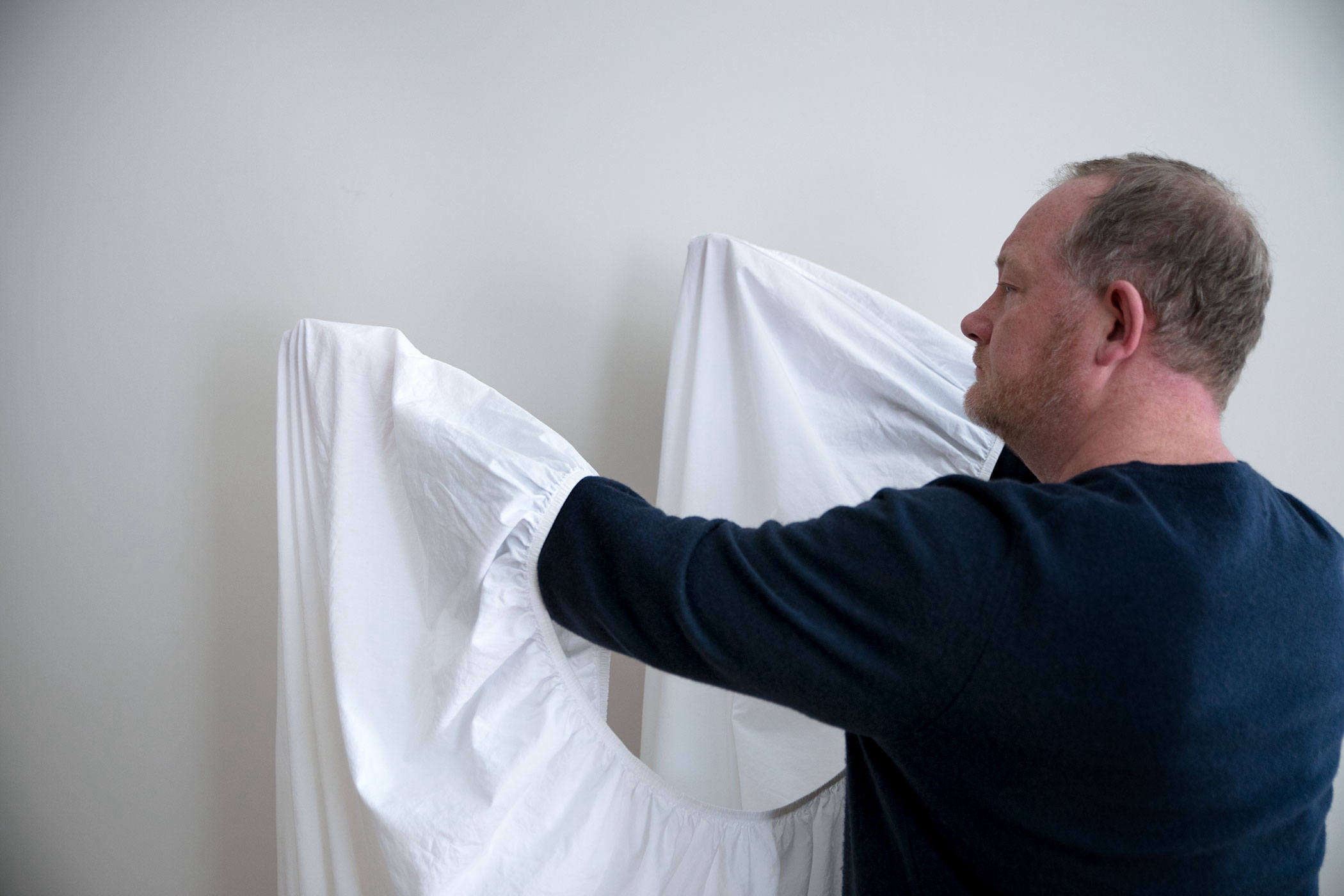

Articles
How To Make A Fitted Sheet Smaller
Modified: February 24, 2024
Learn the simple techniques to make a fitted sheet smaller and achieve a perfect fit. Check out our informative articles for step-by-step instructions.
(Many of the links in this article redirect to a specific reviewed product. Your purchase of these products through affiliate links helps to generate commission for Storables.com, at no extra cost. Learn more)
Introduction
A fitted sheet is an essential component of a comfortable bed, providing a snug and secure fit over the mattress. However, there may be instances when the fitted sheet is too large for the mattress, resulting in loose and wrinkled fabric that can disrupt your sleep. Instead of purchasing a new sheet, there are several methods you can employ to make a fitted sheet smaller and achieve a better fit.
In this article, we will explore various techniques for resizing a fitted sheet and discuss the advantages and limitations of each method. Whether you have recently purchased a sheet that doesn’t quite fit your bed or you want to repurpose an oversized sheet that you already own, these methods will help you achieve a tailored fit without compromising on comfort.
Before we delve into the different methods, let’s take a look at some of the reasons why you might want to make a fitted sheet smaller:
Key Takeaways:
- Don’t toss out that oversized fitted sheet! From using knots to altering the elastic band, learn how to resize your sheet for a snug fit without sacrificing comfort or style.
- Whether it’s incorrect sizing or fabric shrinkage, there’s a solution for every ill-fitting fitted sheet. Get creative and try different methods to achieve a tailored fit that enhances your bed’s appearance and functionality.
Read more: How To Make Fitted Sheet Tighter
Reasons for Making a Fitted Sheet Smaller
There are several reasons why you may need to make a fitted sheet smaller:
- Incorrect Sheet Size: Sometimes, when purchasing a new fitted sheet, you may unknowingly order the wrong size. This can happen due to confusion over mattress dimensions or simply by selecting the wrong option when making a purchase online. Making your fitted sheet smaller can help rectify this mistake.
- Shrinking: With repeated washing and drying, some fabrics may shrink, causing your fitted sheet to become too large for the mattress. This can be especially common with natural fibers like cotton. Altering the sheet to make it smaller ensures a proper fit even after shrinking.
- Hand-Me-Down Sheets: If you have inherited or received hand-me-down sheets, they may not perfectly match the size of your mattress. Rather than discarding them or using them with an ill-fitting appearance, you can resize the sheets to fit snugly.
- Custom Bed Sizes: Some people have unique or custom-made beds that do not conform to standard mattress sizes. If you find it challenging to find fitted sheets that fit your custom bed, resizing a larger sheet can be a solution.
By making a fitted sheet smaller, you can ensure a neat and well-fitted appearance on your bed, eliminating wrinkling, slipping, or the need for constant readjustment during sleep. It also offers a practical and cost-effective alternative to purchasing entirely new fitted sheets.
Now that we understand the reasons for resizing a fitted sheet, let’s explore various methods you can use to accomplish this.
Methods for Making a Fitted Sheet Smaller
When it comes to making a fitted sheet smaller, there are a few different methods you can try. Each method may suit different fabrics and personal preferences, so it’s worth exploring all the options to find the one that works best for you.
1. Using Knots or Elastic Bands
This method involves tying knots or using elastic bands to gather excess fabric at the corners of the fitted sheet. Start by tucking the corner of the sheet under the mattress and then gather the excess fabric towards the center of the mattress. Secure it with a knot or an elastic band. Repeat this process for each corner of the sheet.
This method is quick, easy, and adjustable, allowing you to customize the size of the sheet to your preference. However, it may result in some bunching or wrinkling of the fabric, which could affect the overall appearance and comfort.
2. Sewing Darts on the Corners
For those comfortable with sewing, this method provides a more permanent solution to resizing a fitted sheet. It involves sewing darts at the corners of the sheet to remove excess fabric and create a snug fit.
To do this, start by identifying how much excess fabric needs to be removed. Then, fold the sheet diagonally from the corner to create a triangle, with the excess fabric on the outside of the fold. Pin the fold in place, and sew a straight line along the fold, starting from the widest point and tapering towards the tip. Repeat this process for each corner of the fitted sheet.
Sewing darts offers a precise and tailored fit, ensuring that the sheet contours to the mattress without any added bulk or loose fabric. However, it requires some sewing skills and may not be suitable for those who do not own a sewing machine or have limited access to sewing equipment.
Read more: How To Make Your Fitted Sheet Stay On
3. Altering the Elastic Band
If the fitted sheet is too loose due to a stretched-out elastic band, you can consider replacing or adjusting the elastic to make it smaller. This method involves removing the existing elastic band and replacing it with a shorter one or adjusting the tension of the existing band.
To replace the elastic band, carefully remove the stitching that secures the band to the sheet. Measure and cut a new elastic band to the desired length, ensuring it is a bit shorter than the original band. Attach the new band by stitching it securely to the sheet.
If you prefer to adjust the tension of the existing elastic band, you can tighten it by sewing additional stitches along the band or by creating a smaller gathering point at the corners.
Using Knots or Elastic Bands
One of the simplest and quickest methods for making a fitted sheet smaller is by using knots or elastic bands. This method allows you to gather excess fabric at the corners of the sheet, creating a snug fit over the mattress.
Here’s how you can use knots or elastic bands to resize your fitted sheet:
- Tuck the corner: Start by tucking the corner of the fitted sheet under the mattress. Make sure the sheet is positioned properly on the mattress before proceeding.
- Gather the excess fabric: Once the corner is secured under the mattress, gather the excess fabric towards the center of the mattress. You can do this by pulling the fabric towards the middle, at the point where the corner of the mattress and the corner of the sheet meet.
- Tie a knot: To secure the gathered fabric, tie a knot with the excess fabric. This will create a smaller pocket of fabric at the corner of the sheet, reducing the overall size.
- Use elastic bands: Alternatively, you can use elastic bands instead of knots. After gathering the excess fabric, wrap an elastic band around the gathered portion. Make sure to choose an elastic band that is tight enough to hold the fabric in place but not too tight to cause discomfort when you lie on the sheet.
- Repeat for all corners: Repeat the above steps for each corner of the fitted sheet. This will ensure an even and balanced fit throughout the sheet.
The beauty of this method is its simplicity and adjustability. You can easily untie the knots or remove the elastic bands if you need to readjust the sheet or use it for a different mattress.
However, it’s worth noting that using knots or elastic bands may result in some bunching or wrinkling of the fabric at the corners. While this may not affect the functionality of the sheet, it could impact the overall appearance and smoothness of the bed. If you value a perfectly neat and flat appearance, you may want to consider other methods such as sewing darts or altering the elastic band.
Overall, using knots or elastic bands is a quick and temporary solution to resize a fitted sheet. It is a suitable method for those who prefer a DIY approach and do not want to invest in sewing or alterations. By following these steps, you can achieve a snug and well-fitted sheet that stays in place throughout the night.
Sewing Darts on the Corners
If you’re comfortable with sewing or have access to a sewing machine, sewing darts on the corners of a fitted sheet can provide a more permanent and precise solution for making it smaller.
Here’s a step-by-step guide on how to sew darts on the corners of your fitted sheet:
- Identify the excess fabric: Start by identifying the amount of excess fabric that needs to be removed from the corners of the sheet. Remember to measure and mark the fabric accurately to ensure a proper fit.
- Fold the fabric: Once you have marked the excess fabric, fold the corner of the sheet diagonally to create a triangle. The excess fabric should be on the outside of the fold.
- Pin the fold: Carefully pin the fold in place to ensure it stays secure while you sew. This will help maintain the shape of the dart and provide stability during the sewing process.
- Sew the dart: Using a sewing machine or a needle and thread, sew a straight line along the fold of the fabric. Start from the widest point of the fold and taper the stitching towards the tip of the triangle. Sewing the dart will effectively remove the excess fabric and create a snugger fit.
- Repeat for all corners: Repeat the folding, pinning, and sewing process for each corner of the fitted sheet. This ensures an even and balanced alteration throughout the sheet.
- Trim the excess fabric: Once you have sewn all four darts, trim the excess fabric close to the stitches. Be careful not to cut through the stitches or the main body of the sheet.
Sewing darts on the corners of the fitted sheet provides a tailored fit that contours perfectly to the dimensions of your mattress. This method removes the excess fabric, eliminating any loose or baggy areas that can disrupt your sleep and the overall appearance of the bed.
It’s important to note that sewing darts requires basic sewing skills and access to a sewing machine. If you are not comfortable with sewing or do not have the necessary equipment, you can consider other methods such as using knots or elastic bands for a temporary fix or altering the elastic band for a more adjustable solution.
By following these steps and sewing darts on the corners of your fitted sheet, you can achieve a customized fit that enhances both the functionality and aesthetics of your bed.
Altering the Elastic Band
If your fitted sheet is too loose due to a stretched-out elastic band, altering the elastic can be an effective way to make the sheet smaller and achieve a snug fit.
Here’s a step-by-step guide on how to alter the elastic band of your fitted sheet:
- Measure the desired length: Start by measuring the length of the elastic band that will provide the perfect fit for your mattress. Keep in mind that the elastic should be slightly shorter than the sheet’s original length to ensure it grips the mattress tightly.
- Remove the old elastic band: Carefully remove the stitching that secures the old elastic band to the fitted sheet. Use a seam ripper or small pair of scissors to carefully cut and remove the stitching while avoiding damage to the fabric.
- Attach the new elastic band: Cut a new elastic band to the desired length. Use a safety pin to attach one end of the elastic to the edge of the fitted sheet. Guide the safety pin through the casing or fabric channel that held the old elastic band.
- Thread the elastic through: Slowly thread the elastic through the casing or fabric channel, carefully guiding it around the entire sheet until the other end of the elastic emerges.
- Secure the ends: Once the elastic is threaded through the entire sheet, overlap the ends of the elastic and sew them securely together. Make sure the seam is strong and will hold up to the tension of the sheet.
- Close the casing: Finally, sew the opening of the casing or fabric channel closed, securing the elastic in place. This will prevent the elastic from slipping or getting tangled within the sheet.
By altering the elastic band, you can easily customize the fit of your fitted sheet without making any permanent changes to the fabric. This method allows for adjustability, meaning you can tighten or loosen the elastic as needed to accommodate different mattresses or make future adjustments.
Before altering the elastic band, it’s important to consider the quality and condition of the elastic. If the elastic is worn out or no longer retains its elasticity, it is recommended to replace it entirely with a new, high-quality elastic band.
Altering the elastic band is a simple and affordable solution for resizing a fitted sheet. It’s suitable for those who prefer a more adjustable and customizable approach. By following these steps, you can ensure a snug and secure fit for your fitted sheet, promoting a comfortable and undisturbed sleep experience.
You can make a fitted sheet smaller by sewing elastic bands onto the corners to create a tighter fit. Simply measure and sew the bands to the underside of the corners to adjust the size.
Read more: How Do You Make A Fitted Sheet
Folding and Tucking Technique
If you’re looking for a simple and temporary solution to make a fitted sheet smaller, the folding and tucking technique can be an effective method. This technique involves folding and securing the excess fabric of the sheet under the mattress, providing a taut and snug fit.
Here’s how you can use the folding and tucking technique to resize your fitted sheet:
- Place the fitted sheet: Start by placing the fitted sheet onto your mattress with the excess fabric hanging over the edges.
- Fold the excess fabric: Take the excess fabric on each side of the mattress and fold it at a 45-degree angle towards the center. This creates a diagonal fold that compacts the fabric and reduces the size of the sheet.
- Tuck the folded ends under the mattress: Once the fabric is folded, tuck the folded ends underneath the mattress. Ensure the folds are tucked securely, allowing the fitted sheet to sit tightly against the mattress.
- Smooth out: Smooth out the rest of the sheet to ensure a neat appearance. Make sure the sheet is taut and free from wrinkles.
The folding and tucking technique is a quick and temporary solution for making a fitted sheet smaller. It requires no additional materials or alterations, making it convenient for those who want a simple fix without any permanent changes to the sheet.
It’s important to note that while this technique can provide a snugger fit, it may not be as secure as other methods like sewing darts or altering the elastic band. The folded ends may occasionally come loose with movement during sleep, requiring readjustment from time to time.
Additionally, this technique may not be suitable for heavier or thicker mattresses, as the folds may not hold securely. In such cases, it is recommended to explore alternative methods that offer a more secure and tailored fit.
The folding and tucking technique is a versatile option for resizing a fitted sheet. It allows for easy adjustment and does not require any special tools or skills. By following these steps, you can achieve a snug and tidy appearance for your fitted sheet, ensuring a more comfortable and aesthetically pleasing bed.
Conclusion
Resizing a fitted sheet to achieve a snug and secure fit is a common challenge many people face. However, with the right techniques and methods, you can easily make your fitted sheet smaller without the need to purchase a new one.
In this article, we explored various methods for resizing a fitted sheet, including using knots or elastic bands, sewing darts on the corners, altering the elastic band, and employing the folding and tucking technique. Each method offers its own advantages and limitations, allowing you to choose the best option based on your preferences and available resources.
Using knots or elastic bands provides a quick and adjustable solution, but it may result in some bunching or wrinkling of the fabric. Sewing darts on the corners offers a more precise and permanent solution, ensuring a tailored fit. Altering the elastic band allows for adjustability and customization, while the folding and tucking technique offers a simple and temporary fix.
Before implementing any method, it’s important to consider the specific reasons why you want to make your fitted sheet smaller. Whether it’s due to incorrect sheet size, fabric shrinkage, hand-me-down sheets, or custom bed sizes, resizing the sheet can help you achieve a neat and well-fitted appearance on your bed.
It’s worth noting that while these methods can greatly improve the fit of your fitted sheet, they might not completely eliminate all wrinkles or movement during sleep. The key is to find a balance between a snug fit and comfortable sleep experience.
By following the instructions and incorporating these techniques, you can customize the size of your fitted sheet to fit your mattress perfectly. Whether you choose to use knots or elastic bands, sew darts, alter the elastic band, or employ the folding and tucking technique, you can achieve a tailored fit that enhances the appearance and functionality of your bed.
Remember, don’t be afraid to experiment and try different methods to find the best fit for your specific needs. With a little creativity and ingenuity, you can transform an oversized fitted sheet into one that fits your mattress like a glove.
So, go ahead and resize your fitted sheet with confidence and enjoy a comfortable, snug, and well-made bed.
Frequently Asked Questions about How To Make A Fitted Sheet Smaller
Was this page helpful?
At Storables.com, we guarantee accurate and reliable information. Our content, validated by Expert Board Contributors, is crafted following stringent Editorial Policies. We're committed to providing you with well-researched, expert-backed insights for all your informational needs.
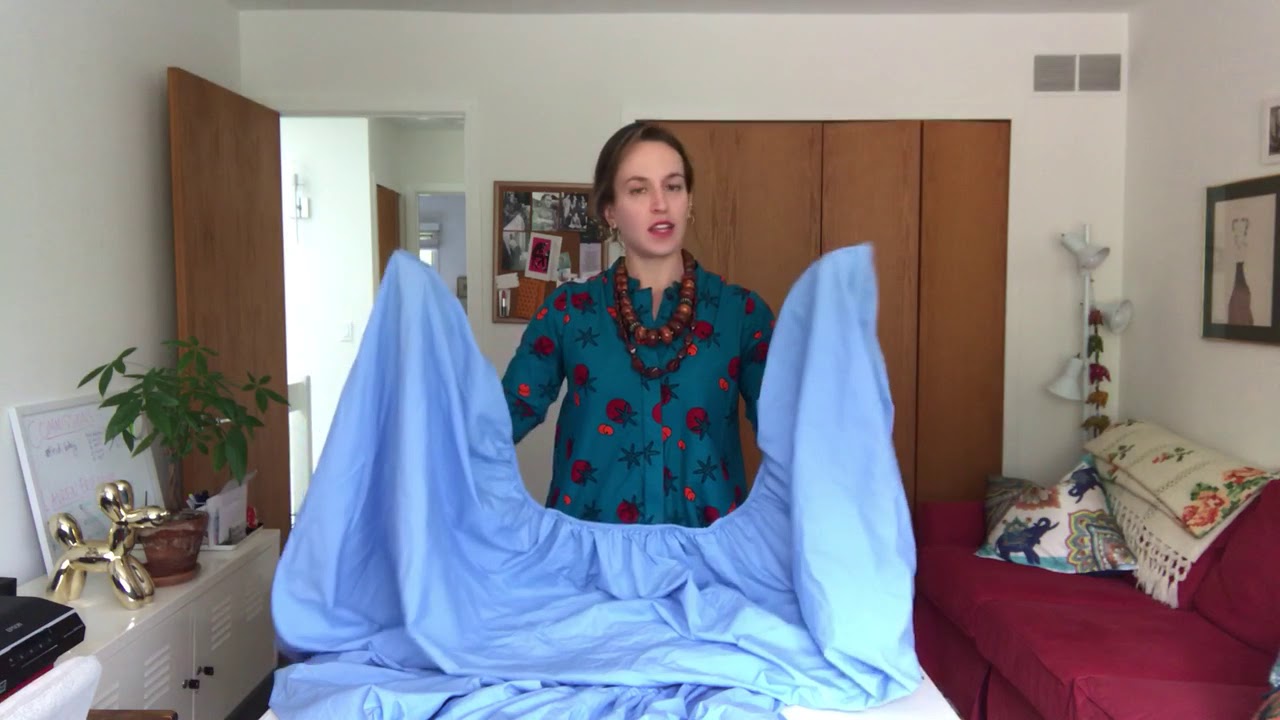

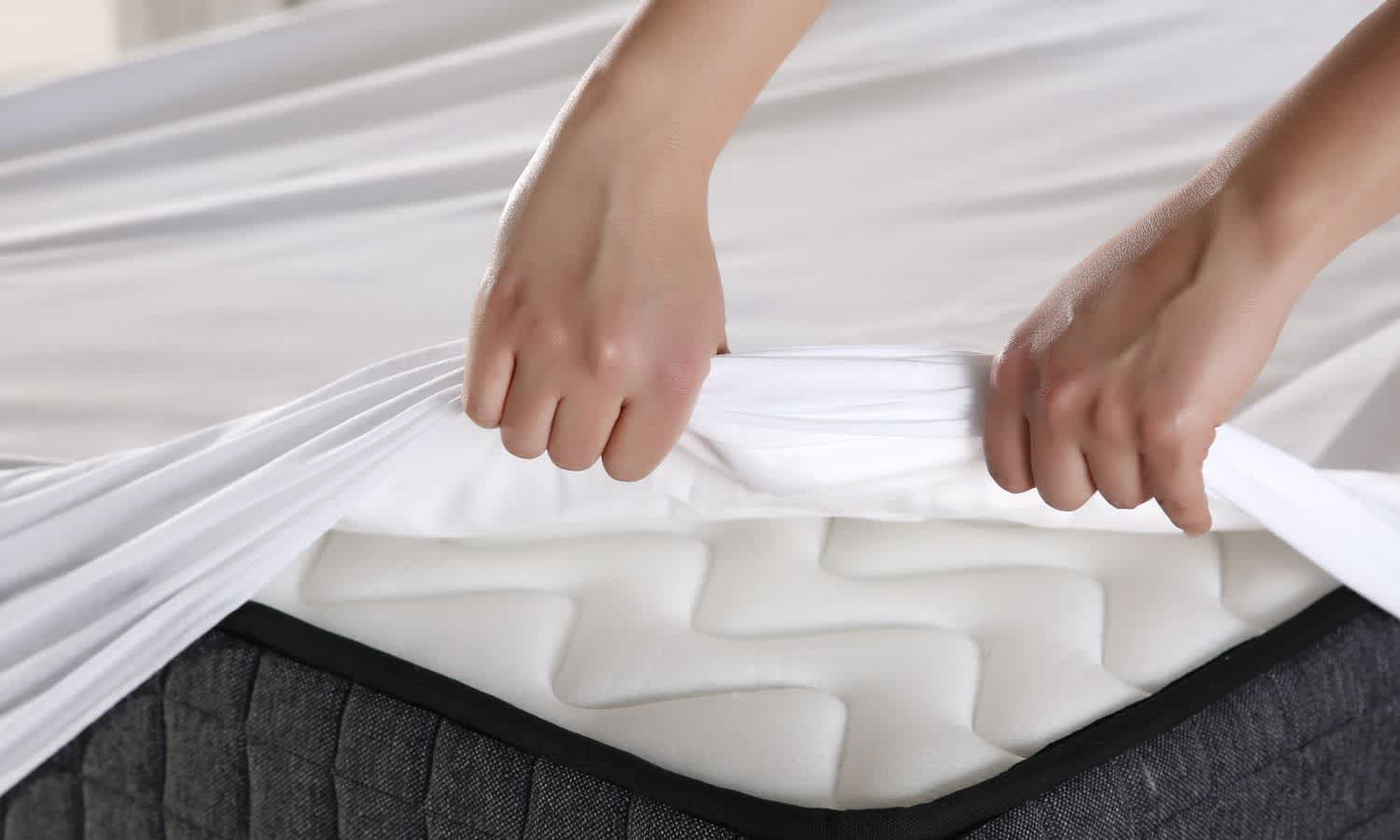




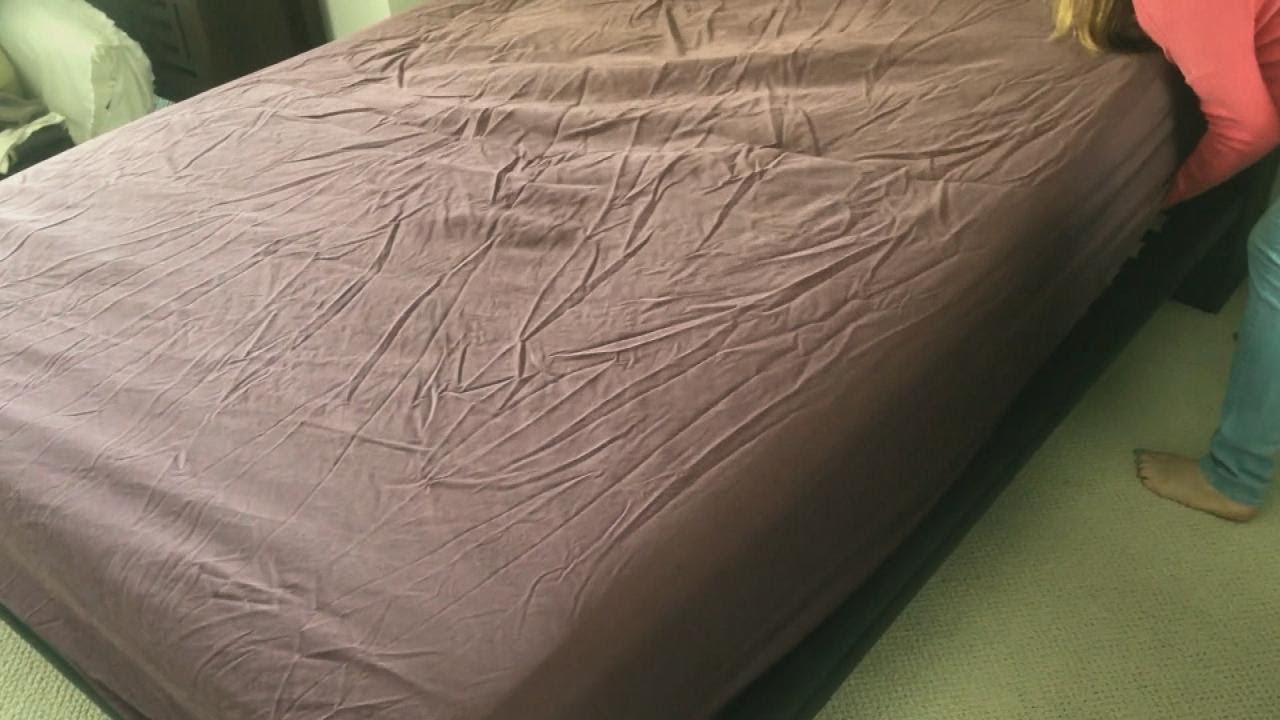


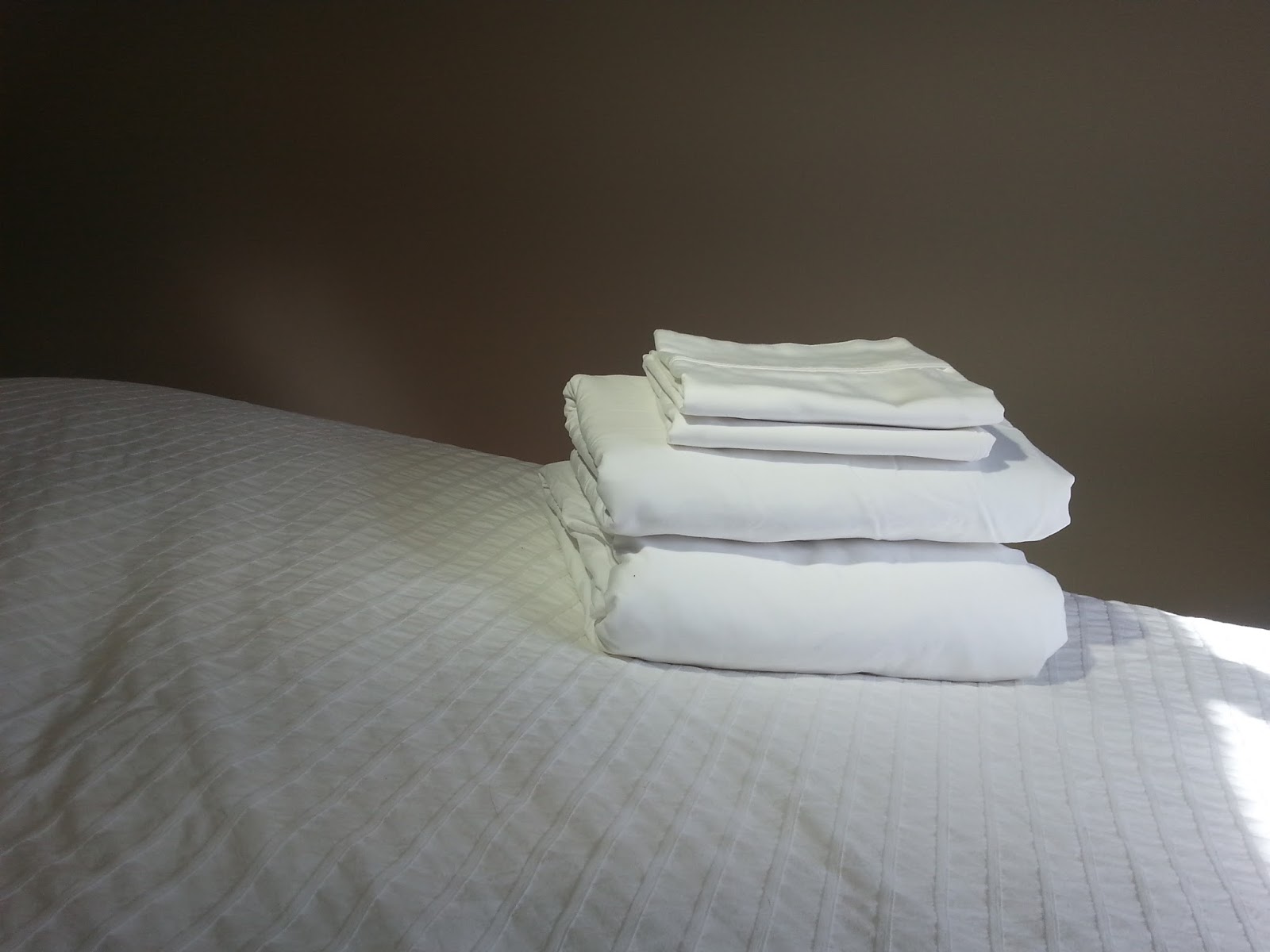
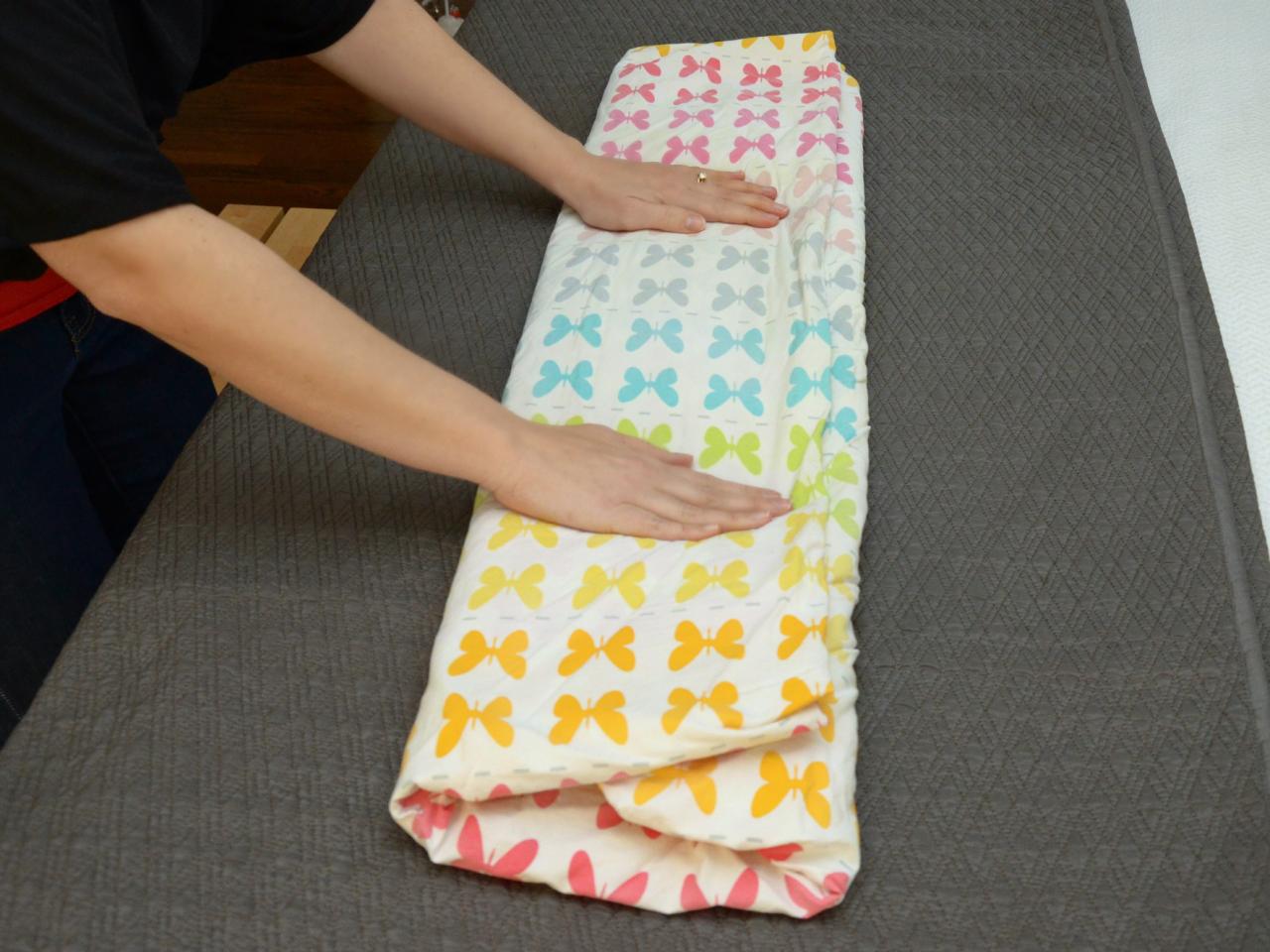


0 thoughts on “How To Make A Fitted Sheet Smaller”